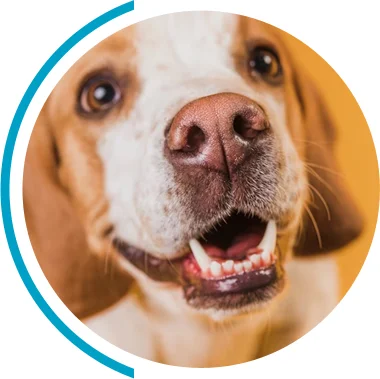Separation anxiety is a common issue among dogs, characterized by distress when left alone. It’s important to understand that this is more than just typical discontent or boredom. Dogs with separation anxiety exhibit various symptoms that can be troubling for both the pet and the owner.
This condition can arise due to several factors, including a dog’s past experiences, temperament, and environment. Recognizing the signs early on is crucial in addressing the issue effectively, and understanding its underlying causes can significantly aid in the training process.
Dogs experiencing separation anxiety often display a range of symptoms. These may include excessive barking, whining, or howling when left alone. Other common signs include destructive behavior, such as chewing furniture or digging, as well as house training issues like urination or defecation indoors.
Additionally, anxious dogs may resort to pacing, trying to escape, or showing other compulsive behaviors. Notably, these symptoms can vary in intensity, often escalating over time if not addressed through proper training and management.
There are several factors that can contribute to a dog developing separation anxiety. A significant cause is a traumatic experience linked to being left alone, which may include being abandoned or rehomed. Similarly, a drastic change in routine or environment—such as moving to a new home or the loss of a family member—can trigger anxiety.
Additionally, certain breeds are more predisposed to anxiety, and younger dogs typically show higher vulnerability. Understanding these causes helps owners develop tailored strategies to mitigate their pets’ anxiety over time.
Training is an essential aspect of managing and overcoming separation anxiety. It not only helps the dog feel more secure while alone but also fosters a healthier relationship between the dog and owner. Effective training involves implementing techniques that address the anxiety symptoms in a compassionate and constructive manner.
Moreover, consistent training provides mental stimulation for the dog, contributing to overall well-being. With the right training, dogs can learn to cope better with their feelings of anxiety, resulting in a happier and more balanced pet.
The benefits of training dogs with separation anxiety are manifold. Primarily, training reduces symptoms, enabling dogs to remain calm when left alone. This leads to a decrease in destructive behaviors and improves the dog’s overall quality of life.
Furthermore, a well-trained dog tends to exhibit better social behavior and can integrate more seamlessly into family activities. As a result, both the dog and owner share more positive experiences and build a stronger bond.
Training serves a pivotal role in diminishing anxiety symptoms. By gradually exposing dogs to short periods of separation, owners can help their pets learn that being alone is a safe experience. This process often includes rewards for staying calm when alone and gradually increasing the separation duration.
Furthermore, incorporating relaxation techniques during training can help dogs associate alone time with positive experiences. This progressive approach fosters confidence and independence in pets, significantly alleviating their anxiety symptoms over time.
Several training techniques can effectively address separation anxiety in dogs. Each approach may work differently depending on the individual dog’s temperament and the underlying reasons for their anxiety. It’s essential to assess each case holistically to determine the best fit.
Among these techniques, counter-conditioning and desensitization are often the most commonly recommended methods. These strategies provide a compassionate way to help dogs adapt to alone time while reducing their feelings of distress.
Counter-conditioning involves changing a dog’s emotional response to being left alone. This can be done by associating departure cues (like grabbing keys) with positive experiences, such as treats or favorite toys. Over time, this technique reinforces a positive association with the owner’s absence.
Desensitization works hand-in-hand with counter-conditioning. It entails exposing the dog gradually to situations that may normally trigger anxiety while reinforcing calm behavior. This slow exposure helps the dog adjust to being alone without becoming overwhelmed.
Utilizing toys and distractions can be an effective strategy in training sessions. Interactive toys filled with treats or puzzles keep a dog’s mind engaged and can ease feelings of boredom and anxiety while the owner is away.
Moreover, rotating toys frequently can maintain the dog’s interest, ensuring that they have something positive to focus on when left alone. This diversion helps create a more enjoyable solo experience, facilitating a smoother transition towards independence.
In many cases, seeking professional dog training services is invaluable for owners dealing with separation anxiety in their pets. Professional trainers possess the expertise and tools necessary to implement effective training strategies tailored to individual dogs’ needs.
Additionally, they provide guidance and support to owners, making the training experience smoother and more effective. Prospective clients should research local services to find a trainer that suits their specific requirements and philosophy.
When selecting a dog trainer for separation anxiety, it’s crucial to consider several factors. Look for trainers with experience in behavior modification, particularly in anxiety-related issues. They should use positive reinforcement techniques rather than aversive methods.
Furthermore, consider trainers who prioritize a partnership approach, emphasizing communication and understanding between the dog and owner. Clients should also seek reviews and testimonials from past clients to gauge the trainer’s reputation and effectiveness.
Professional training can significantly assist in managing separation anxiety by providing structured guidance and tailored techniques. Trainers can assess the specific symptoms present in the dog and recommend individualized training plans that address those challenges.
Moreover, they can educate owners on the importance of consistency and patience throughout the training journey. By offering support and professional insights, trainers create an environment conducive to learning and overcoming anxiety.
Once training has concluded, it’s vital to maintain the progress achieved. This ongoing reinforcement helps prevent a resurgence of anxiety symptoms and ensures that the dog continues to thrive in its educational journey.
Creating a structured routine at home, complete with consistent training practices, plays a significant role in this process. Owners should remain vigilant and proactive in addressing any signs of stress or anxiety that may arise post-training.
To maintain a dog’s training and progress, it’s beneficial to incorporate regular, short training sessions into the daily routine at home. Engaging in multiple brief exercises reinforces learned behaviors without overwhelming the dog.
Additionally, gradually increasing the duration of alone time at home, coupled with positive reinforcement when the dog remains calm, will further solidify the training principles. Being consistent with praises and rewards is crucial in reinforcing good behavior.
Preventing relapses involves ongoing monitoring and flexibility in training strategies. Recognizing triggers or changes in the dog’s environment enables owners to adapt their approach as necessary.
Incorporating mental stimulation through regular exercise and play can also help alleviate anxiety. Dogs thrive on routine, so maintaining a consistent schedule provides security and reduces feelings of uncertainty, ultimately curbing the risk of relapses.
If you’re grappling with the challenges of your furry friend’s separation anxiety, The Grounded Hound Canine Coaching is here to offer you a compassionate and professional guiding hand. As a Certified Dog Trainer with specialized certifications in Separation Anxiety (CSAT, SA Pro), I bring a wealth of knowledge and a heartfelt understanding of the patience, kindness, and consistency needed to strengthen the bond between you and your canine companion. With a solid background in both dog training and business management, I am dedicated to supporting you through the journey of creating a serene and happy environment for your pet. Don’t let separation anxiety disrupt the harmony of your home. Contact Us Today and take the first step towards a more peaceful and fulfilling relationship with your dog.

